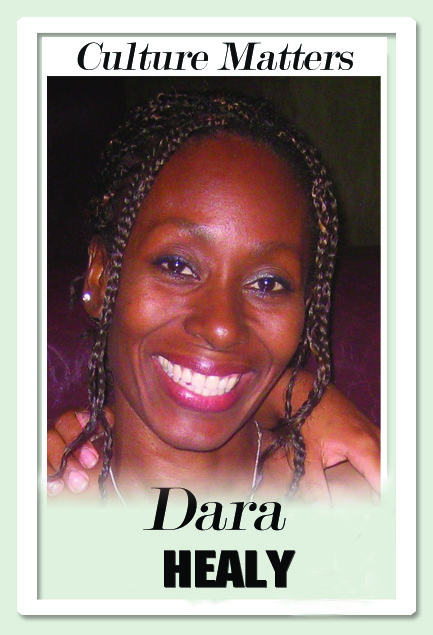Illuminating the East Indian mission

Culture Matters
He anna-dhana ki maharani
He jai Lakshmi rani
Tujhe ghar ghar puje prani
He jai lakshmi rani
O Mother Lakshmi, Goddess of food and wealth, victory to you
You are worshipped by people in every home
Victory to you
– Hindu Bhajan, He Anna-Dhana Ki Maharani
MY FAMILY and I do not get stared at anymore when we go to Ganga Dhara, the Hindu river festival. Well, not much. Dark-skinned black women of the Ifa/Orisa belief system, with Rastafarian hairstyles, wearing East Indian-styled clothing and head coverings taking part in puja to Hanuman. As we say, that’s a true “tief head” if ever there was one.
But when you think about it, believers in African spirituality taking part in Hindu rituals, it is not really that strange. Baba Sam Phils, Orisa high priest, would often chant in perfect Bhojpuri, the language spoken by indentured Indians, remembered from Utar Pradesh and Bihar. Baba Sam understood that on the question of beliefs, there were more similarities than differences between African and Indian practices.
In the Yoruba yard, the red flags are planted for Sango. This is the colour of the powerful Hanuman. For the Orisa, blue flags represent Yemoja, mother of the vast oceanic waters. In the Hindu yard, blue is for the complicated and powerful Shiva. In both traditions, divine forces are male and female; life is conceived as a cycle of connectedness – from the unborn to the living and those in the ancestral realm.
So it is not surprising our level of comfort as we walk barefooted through the cool river water or light deyas to celebrate Divali, the Festival of Light. In TT we claim the curry, the roti, dhal and rice as much as we do chutney dance or apply henna to our bodies. We play tassa with African drums in musical fusion, casually say something is “hotter than a chulah,” and ask people if they feel “we are Mother Lakshmi” when they are asking too much of us.
Many of us have similar histories of ancient ritual, pain and loss. But is it enough? Is it too soon to unlearn the cruel behaviours we were taught by our former European masters?
It is worrying that in spite of the strong ideological foundations of the two main political parties, little has been done to address ingrained racial resentments. This week, Khafra Kambon was forced to remind that we “...live in a society where ethnic groups are influenced by deeply-rooted negative stereotypes about each other. Prejudices about race and colour are substantially informed by the historical experiences of slavery and indentureship.”
One hundred and seventy-five years ago, our country changed again. Pundit Ravindranath Maharaj (Ravi Ji) has long maintained that there was a deeper purpose for East Indians coming to this part of the world, beyond further enriching the British Empire.
“Go. Ah sending you on a mission/in the Caribbean.” His moving poem/song remembers the difficult period of indenture and what was endured by the East Indians who came. It imagines that “Dharti Maataa (Mother Earth) is sending the jahajis (ancestors) to the Caribbean...” to bring positivity (sanskaar) and to make TT their home.
During Divali, the Hindu Prachaar Kendra, which Ravi Ji founded, remains razor focused on guiding the community through the vehicles of ritual, tradition and culture. Managed by Geeta Ramsingh, at the kendra they encourage many local cultural forms of expression. From storytelling to dance, theatre and food – their approach to empowerment, immersive and all-embracing, remains razor sharp on this vision.
We must allow our vast range of festivals and cultural diversity to heal us. Sadly, the reality is that although we share the same physical space, in many ways we do not know one other. Beyond eating doubles, how many of us have heard stories from the Ramayana or experienced a puja? I imagine that our lingering colonial prejudices of class, colour and religion would not even consider this approach. But the gaps must be addressed. In a cosmopolitan country, I have heard countless radio announcers say “amen” when they agree with something.
Our family will continue to walk in the cool waters of a Hindu river festival and light deyas to welcome the divine essence of Mother Laskhmi into this collective space we call home. On this sacred occasion, let us all look to her for guidance and healing.
“Ma asato ma sad gamaya/Tamaso ma jyotir gamaya/O Mother, lead me from untruth to truth. From darkness lead me unto the brilliance of thy wisdom.” Namaste.
Dara E Healy is a performance artist, communications specialist and founder of the NGO, the Indigenous Creative Arts Network – ICAN


Comments
"Illuminating the East Indian mission"